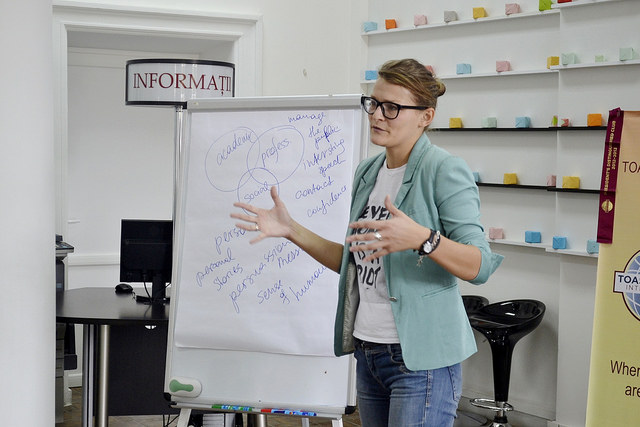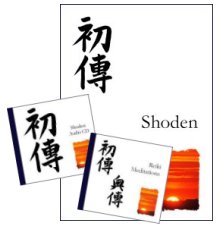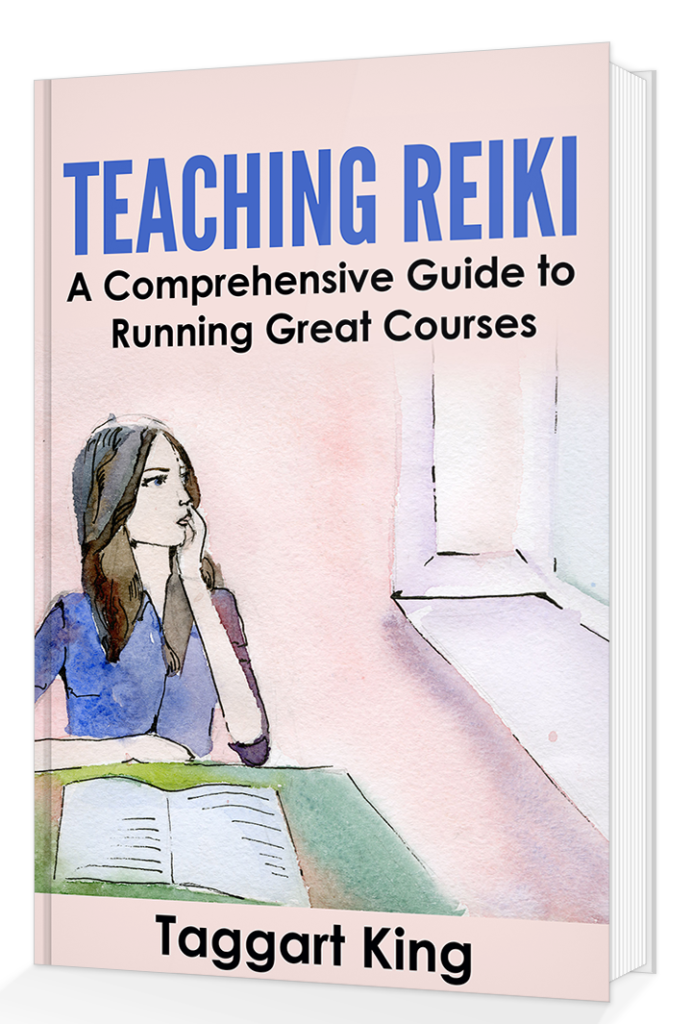
In my recent blog “Reiki teaching: explain, guide, review” I ran through a simple sequence that you can follow when teaching practical exercises to your students.
In this blog I would like to talk about the information that you pass on, how to help the information to stick in your students’ minds, and how to ensure that new information relates to what has come before, and is put in proper context.
And in doing this, I will be relying on some very basic advice that is given to people who do public speaking. In fact, this is the most basic public speaking advice!
How to speak in public
When you give a talk to a group of people, you need to:
- Tell them what you are going to tell them
- Tell them
- Tell them what you told them
So you have an introduction where you run over the main themes or areas that you are going to be covering. This starts to give your listeners a ‘map of the territory’, it provides them with a set of main headings or categories, so when you move on to the next stage (‘tell them’) you can expand on those themes and headings. The listener already has some ‘hooks’ in their memory to add the new information to, so it makes sense, has somewhere to fit, and will be more memorable.
Finally, you tell them what you told them, which means that, after having explored the issues in detail, you conclude by bringing them back to the main themes, points, headings that you started with, leaving them with a final summary of your talk. They go away with the main themes clear in their minds.
In doing this, your listeners have received the same information three times, by way of the introduction, by you expanding on these themes in the main part of your talk, and by summarising things at the end. And we know that repeating your exposure to information, particularly when there is some overall structure, where the info relates to a number of clear themes or ideas, and ideally where the information is personally relevant to you or you can imagine how you might use the information in practice, makes that information much more memorable.
So how does this relate to talking to your Reiki students as you progress through their course?
How to make your Reiki course content memorable
Well, you can explain to begin with what is going to be happening during their day, the big items, the main themes or headings. Tell them what they are going to learning about and practising in the morning, and what they will do in the afternoon. I know they will have seen your course schedule in advance but it’s a good idea to remind them on the day.
Then, whether you’re giving people a quick talk about ‘What Reiki is and where it comes from’ or ‘What Reiki can do for you and the people around you’, or whether you are introducing Hatsurei ho or explaining about scanning, you can follow the “tell them, tell them, tell them” sequence: outline the main points, expand on them and then summarise.
Outline, expand, summarise.
Then move on to the next chunk of your day.
Recapping after a break
When you have had a break (your mid-morning break or the lunch break) it is very useful to give them a quick reminder of what they did earlier, summarise the main points very briefly and then move on to the next section, but showing how the next chunk of your day relates to what has come before: how it follows on, how it builds on what they have already done.
You might use a phrase like:
“before the break what we did was to…”
“we learned that….”
“and you discovered that…”
“now we are going to move on by learning about… and practising…”
If you taught Hatsurei ho and had a break, and now you are going to go through self-treatments, you might end up saying something like this (off the top of my head):
“So, before the break we went through Hatsurei ho, a set of daily energy exercises that you can use every day to start to balance your energy system: to clear, cleanse and ground you. You started by using Kenyoku – the dry bathing – where you ritually cleared and cleansed your energy system and then you moved on to move the energy to and from your tanden in time with your breathing, finally focusing the energy on your hands. It doesn’t take too long to do, is a wonderful exercise to get into the habit of doing, and the audio CD that came in your study pack talks you through all the stages, so you can relax and just follow the instructions.
“Now we’re going to move on to learn how to carry out a self-treatment. There are lots of different ways of doing self-treatments, most of them involving resting your hands on different parts of the body and letting the energy flow. Basically you are firing the energy from lots of different directions to give it the best chance to get to where it needs to go. But sometimes people can find the hand positions a bit awkward or uncomfortable to hold for any amount of time, so fortunately from original Japanese Reiki comes a self-treatment method actually taught by Mikao Usui, where you imagine that the energy is focusing on different areas of your head, and that’s what we are going to go through. By treating the head, you actually end up treating the whole body anyway, and it’s a lovely routine that you can go through whenever you have the opportunity to close your eyes for a few minutes.
“So, this is what we do…”
PS.
Please do not do this…
By the way, as an aside I wanted to say that you should never read a book or manual out loud to your students.
- It is unprofessional.
- It’s so boring: not everyone reads out loud well.
- They can read it themselves so they don’t need you to do it for them.
I have heard of courses where most of what happened was the teacher reading out loud to the student from a manual.
This is disgraceful behaviour!
They are there to learn from *you*, not to hear how well you can read out someone else’s book.
Never read stuff out to students.
You may as well be a performing parrot.
Need some help with your course materials?
 I have put together comprehensive and detailed course manuals and easy-to-listen-to audio CDs with commentaries and guided meditations. All these are available for you to use on your own courses (no matter what lineage you have) and you can order them in packs of four at greatly discounted prices. Reiki teachers all over the world are using them. Find out more by clicking here:
I have put together comprehensive and detailed course manuals and easy-to-listen-to audio CDs with commentaries and guided meditations. All these are available for you to use on your own courses (no matter what lineage you have) and you can order them in packs of four at greatly discounted prices. Reiki teachers all over the world are using them. Find out more by clicking here:
Reiki Evolution Manuals and audio CDs.
Did you like this blog?
If so, you are going to love this book…

“Spot on! I’ve been teaching reiki for many years and I must say I wish this book had landed back then!
I’ve put together courses and really would have loved a book like this to refer back to, it’s concise, clear, laid out really well and is informative and a mini support system to boot.
If you’re entering the Reiki world with an aim to become Master/Teacher then having this book in your armoury will benefit you.”
S J Price
Teaching Reiki
A Comprehensive Guide to Running Great Courses
This is the book I really wish had been available when I started running Reiki courses in 1997. And it would have helped me greatly in my journey as a Reiki teacher thereafter.
You’ll find a wealth of advice about how to set up and run your Reiki courses: read articles about planning and structuring your courses; find out how to explain things to students in a way that honours their learning preferences and personality types; discover how to create top quality course materials and how to support your students long-term.
We look at the differences between ‘Western’ and Original Japanese Reiki and I explain how I created “Reiki Evolution” courses, which pass on the essence of Reiki’s original form. Read this book and you’ll know how to teach “Reiki Evolution” style: what to say, what to teach, and even how to teach Reiki in a ten-week ‘Evening Class’ format.
This book will be of interest to anyone who is about to start teaching Reiki, or to established Reiki teachers who are interested in enhancing the quality of their courses.
Read the contents list before you order, if you like, by clicking on this link: Table of contents
Book: 370 pages.
Price: £15.99 + p&p
Or Download a PDF version now for only £12.49
Photo credit: Biblioteca Centrala a BM

Hi Taggart, it’s interesting you brought up the point about a teacher reading out loud the course manual: we all took it in turns to read sections out aloud throughout all three reiki degrees, which was odd because our teacher had been a professional school teacher. Having said that she seems to be knowledgeable about reiki – outside the manuals – so I’m not sure why she chose this method.
Strange. It is tedious in the extreme to either read out loud from a book on a course (the Reiki Master is supposed to be the teacher, not you) or to have to listen to soeone reading out loud (whether the teacher or another student). I would expect better of a teacher: what would be wrong with them learning the contents of that book and then expressing the contents in their own way? She may as well have gone out for a tea break and left the students there listening to an audio tape! Not very impressive in my book.
Hi Taggart! Big smile when I read this, because, as a teacher, these words were my motto! Can’t even recall where I found them, but think it was an US source. Passed on the simple idea to students with SEN who were doing interviews or oral presentations, and the very simplicity was the pure gold.
One small exception, in my humble opinion: having just trained my first cohort, which was just wonderful as an experience, I did draw their attention to one or two key passages in your excellent manual, and suggested they highlight them to make sure they held their ‘nugget of truth’. But that is a far remove, of course, from verbatim reading of content. Honestly don’t know how anyone would have time to do that, even if they wanted to…!
Hi Taggart. This is your friend (I hope), retired professor from the states. I am retired from a university in Mississippi, though I am not from there and don’t live there now. While I was there a friend told me a homely story about two ministers talking. The first said that his church was not well attended, while the other guy’s was always packed. What did he do differently, the first wanted to know. The second said, “Alls I do is this. First I tell ’em what I’m gonna tell ’em. Then I tell ’em. Then I tell ’em what I tole ’em.” Simple wisdom crosses international lines.
Ha! Thank you for that. Yes, It’s a principle with universal application 🙂